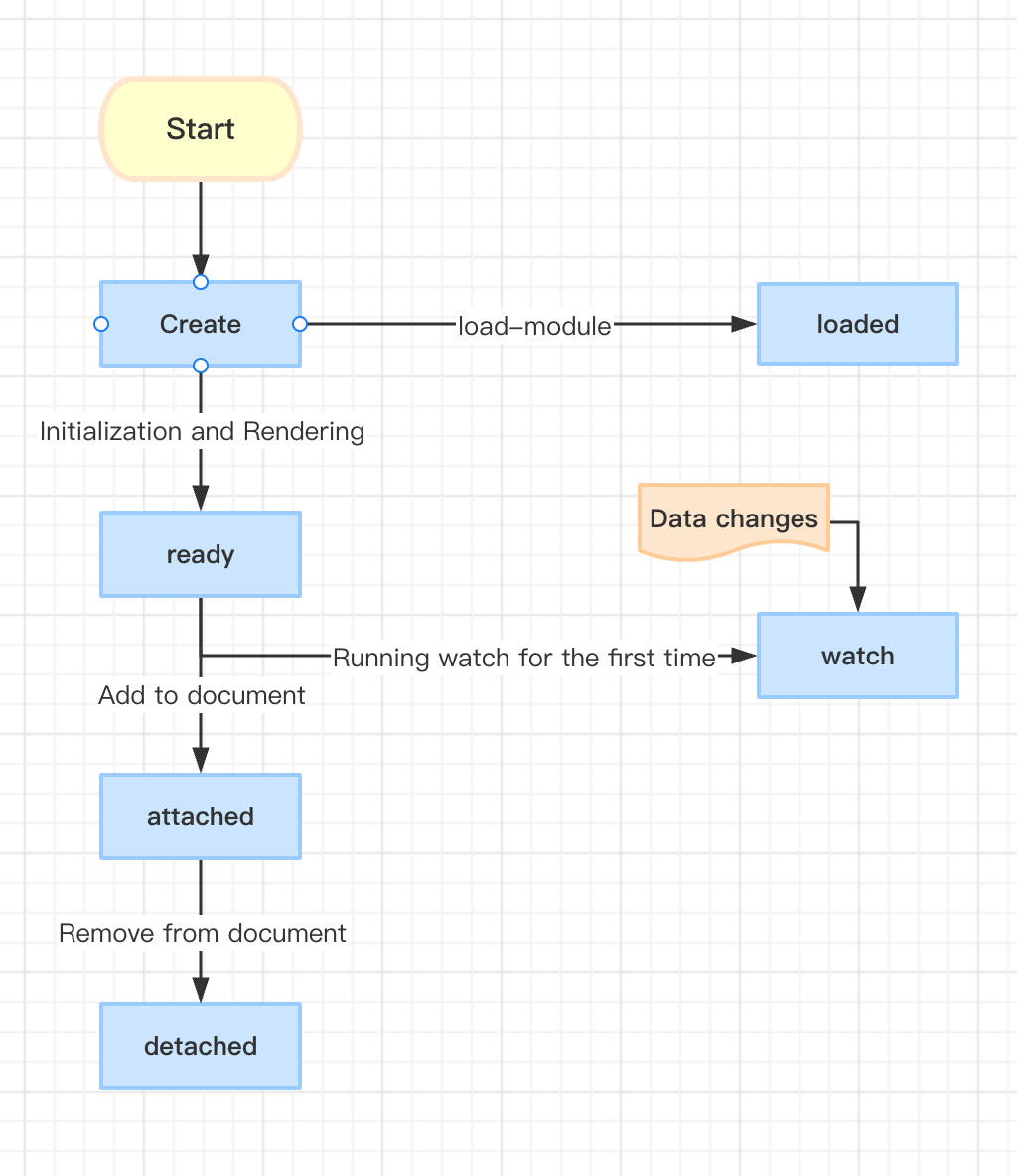attached
attached lifecycle hook is triggered when the component is added to the document. At this stage, it is suitable for obtaining size-related information of the elements within the component, performing data binding, and global event operations.
Example code
<div id="logger">-</div>
<div style="color:red;">shadow html : <span id="shadowHtml"></span></div>
<script>
setTimeout(()=>{
const ele = document.createElement('test-ready');
setTimeout(()=>{
$('body').push(ele);
},500);
},500);
</script>
<div id="logger">-</div>
<div style="color:red;">shadow html : <span id="shadowHtml"></span></div>
<script>
setTimeout(()=>{
const ele = document.createElement('test-ready');
setTimeout(()=>{
$('body').push(ele);
},500);
},500);
</script>
<template component>
<div>test ready</div>
<script>
let count = 0;
export default {
tag: "test-ready",
ready(){
count++;
$("#logger").text = count;
$('#shadowHtml').text = this.shadow ? this.shadow.html : 'null';
},
attached(){
count++;
$("#logger").text = count;
}
};
</script>
</template>
Lifecycle Flowchart
